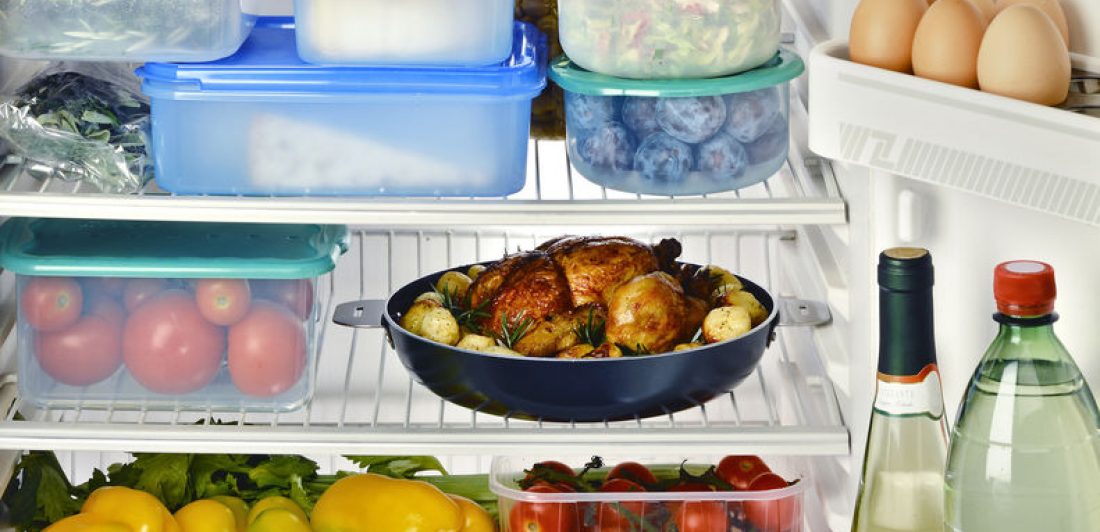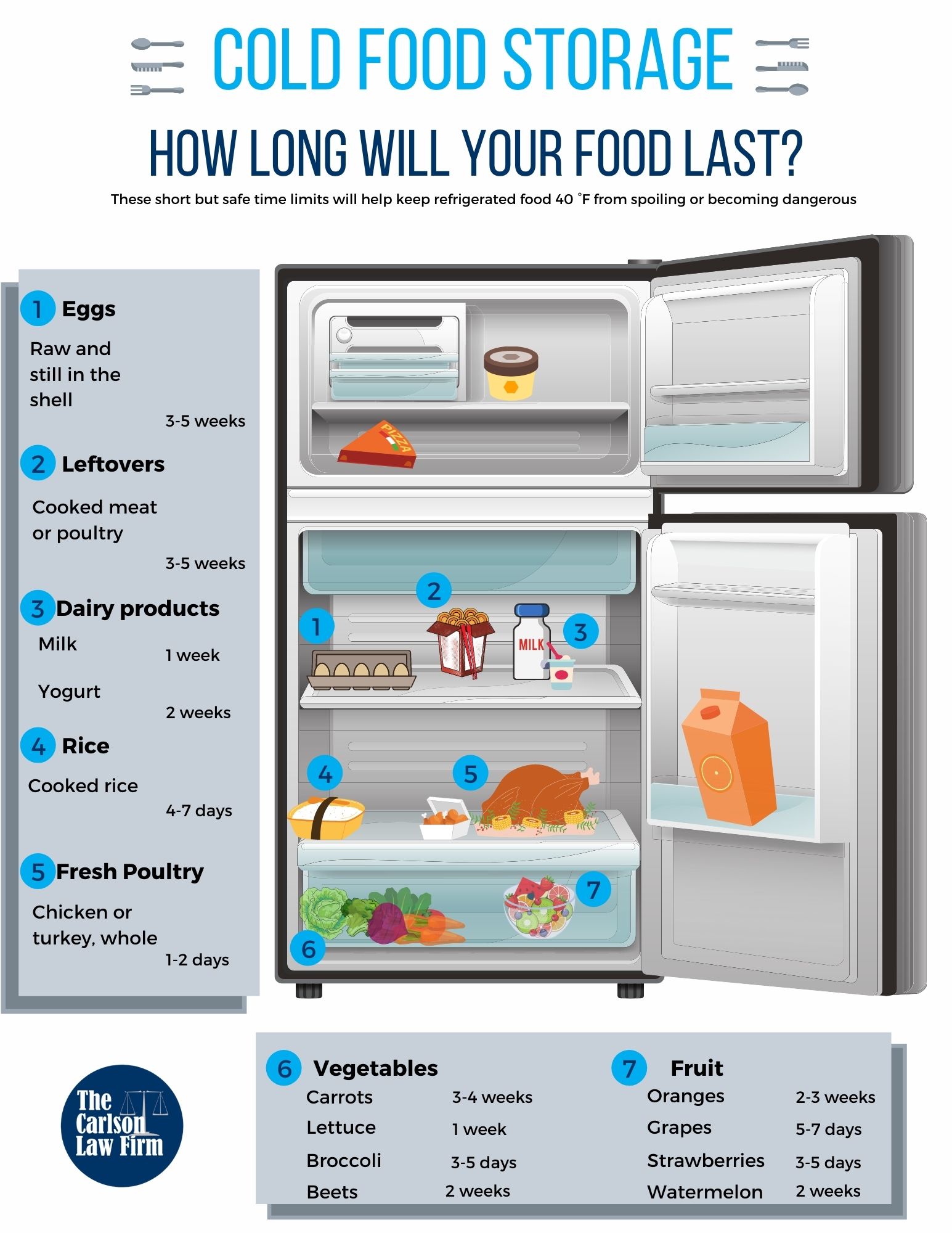Is your refrigerator running? If so, you better catch it!
On a serious note, refrigerators are important pieces of equipment in the kitchen for keeping food safe. It is important to keep cold foods cold and frozen food frozen solid.
The Federal government estimates that there are about 48 million cases of foodborne illness annually. Whether placing food in the refrigerator, the freezer, or the cupboard, you have plenty of opportunities to prevent foodborne illnesses. Although no one is completely safe from food poisoning, some people are at greater risk of developing a foodborne illness.
Importance of Refrigeration
Storing foods at cold temperatures slows the growth of microorganisms. As we all know, bacteria exist everywhere in nature. They are found in soil, water, air, and the food we eat. When they have nutrients (food), moisture, and optimum temperatures.
Bacteria grow rapidly between the temperature range of 40 and 140 degrees F, the “Danger Zone,” with as little time as 20 minutes. Refrigerators are an important part of society. They keep our food cold and help prevent some people from getting sick. Additionally, they can keep medicine cold, which is very important to many people.
A refrigerator set at 40 degrees Fahrenheit or below will protect most foods.
Food poisoning is frequently caused by bacteria from foods that have been incorrectly stored, prepared, handled, or cooked. If food isn’t stored properly, the bacteria in it may multiple to dangerous levels.
Types of bacteria in refrigerated foods
There are two types of families of bacteria: pathogenic and spoilage bacteria. Pathogenic bacteria is the kind of bacteria that causes foodborne illness. Spoilage bacteria are the kind of bacteria that cause foods to deteriorate and develop unpleasant odors, tastes, and textures.
Pathogenic bacteria can grow rapidly in the “Danger Zone,” referring to the temperature range between 40 and 140 °F. Unlike spoilage bacteria, pathogenic bacteria generally don’t affect the taste, smell, or appearance of food, making it harder to determine when a pathogen is present.
Spoilage bacteria can grow in low temperatures, such as in the refrigerator. The ideal temperature a refrigerator should be set at is 40 °F or below. Some refrigerators may have built-in thermometers to measure their internal temperature. However, for those that don’t have this feature, it might be in your best interest to purchase a thermometer.
What are some high-risk foods?
Some food items can grow bacteria and multiply more easily than others. High-risk foods include:
- Dairy products, such as custard and dairy-based desserts
- Eggs and egg products, such as mousse
- Raw and cooked meat, including poultry such as turkey and chicken, and any food that may contain them
- Seafood
- Cooked rice and pasta
- Prepared fruit salads
- Ready-to-eat foods, including sandwiches, rolls, and pizzas that contain any of the food above.
Although refrigerator temperatures do not destroy pathogenic or spoilage microorganisms, the lower temperatures slow the growth already present in the food. Time and temperature are important factors in food quality. Here are tips when it comes to storing cold food:
- Use food quickly and don’t expect the food to remain high-quality for the maximum length of time. Any items that are open or partially used usually deteriorate more quickly than unopened packages.
- Don’t stack foods tightly or cover refrigerator shelves with foil or any material that prevents air circulation from quickly and evenly cooling the food.
- As mentioned earlier, your refrigerator should be maintained between 34°F and 40°F. There is a refrigerator thermometer available that help monitor the temperature inside your appliance to ensure that your food is kept cool.
- Some food items, such as milk, meats, and leftovers, should be kept colder than others.
- Typically, the coldest part of the refrigerator is usually nearest to the freezer compartment, but a refrigerator thermometer will provide an accurate check for each appliance.
- Check expiration dates. The “use by” date is the manufacturer’s recommendation to use the product by this date for the best flavor or quality. If you’re not sure if the food looks questionable, throw it out.
- Clean the refrigerator regularly and wipe spills immediately. This will help reduce Listera bacteria’s growth and prevent drips from thawing meat that can allow bacteria from one food to spread to another. Clean the fridge out frequently.
Food preparation and sanitization
As much as it is important to store your food correctly, food preparation and sanitization are just as important, if not more to prevent any foodborne illness. When preparing food, here are a few suggestions for food preparations and keeping surfaces and utensils nice and clean.
Food preparation Tips
- Wash your hands thoroughly in soap and water before touching any food. You should be washing your hands every time you handle raw meat. fish or chicken. It is essential that your hands are dry as well.
- Rinse unwashed salad, fruit, and vegetables under the cold tap before eating them. This removes soil and debris which contain bacteria and parasites.
- Keep raw and cooked foods separate before you prepare them. Make sure that any chopping boards and utensils used for raw food are thoroughly cleaned before you use them for cooked food.
Sanitization Tips
Practicing ways to keep the kitchen clean and free from bacteria whenever possible is an important step to reduce the risk of bacteria spreading and causing infections.
- Wipe down all worktops. Wash chopping boards by hand or, if you prefer, place them in the dishwasher.
- Wash all utensils in soap and hot water, or put them in the dishwater.
- Make sure to wash tea towels, dishcloths, and general cloths on a regular basis. Dirty or stained towels are the optimum breeding ground for bacteria so it is important to wash them frequently.
More than an upset stomach
Foodborne illness is serious. Food poisoning or foodborne illness isn’t a
stranger to anyone, affecting anyone who eats food contaminated by bacteria, parasites, viruses, toxins, or other substances, but certain people are more likely to get sick or to have a serious illness.
Some people that are most likely to get food poisoning include,
- Adults age 65 or older
- Children younger than 5 years
- Pregnant women
- People whose immune system is weakened due to medical treatment or illness
The following may appear 12 to 72 hours after eating contaminated food but may occur between 30 minutes and 4 weeks later:
- Nausea, diarrhea (may be bloody), vomiting, and abdominal pain
- Fever, headache, and body ache
- Sings of dehydration, including little or no urination
- High fever (temperature over 102°F, measured orally)
Although most people may experience only mild illnesses, some people may need to be hospitalized, and some illnesses can result in long-term health problems or even death. Infections transmitted by food can result in:
- Chronic arthritis
- Brain and nerve damage
- Hemolytic uremic syndrome, resulting in kidney failure
Some of the causes of food poisoning include:
- E. Coli (Escherichia coli)
- Salmonella
- Shigella
- Vibrio
- Cyclospora
At The Carlson Law Firm, we care
If you or a loved one became ill after having contaminated food or drink, contact us today to explore your case and legal options that you may have. We care, we can help.






